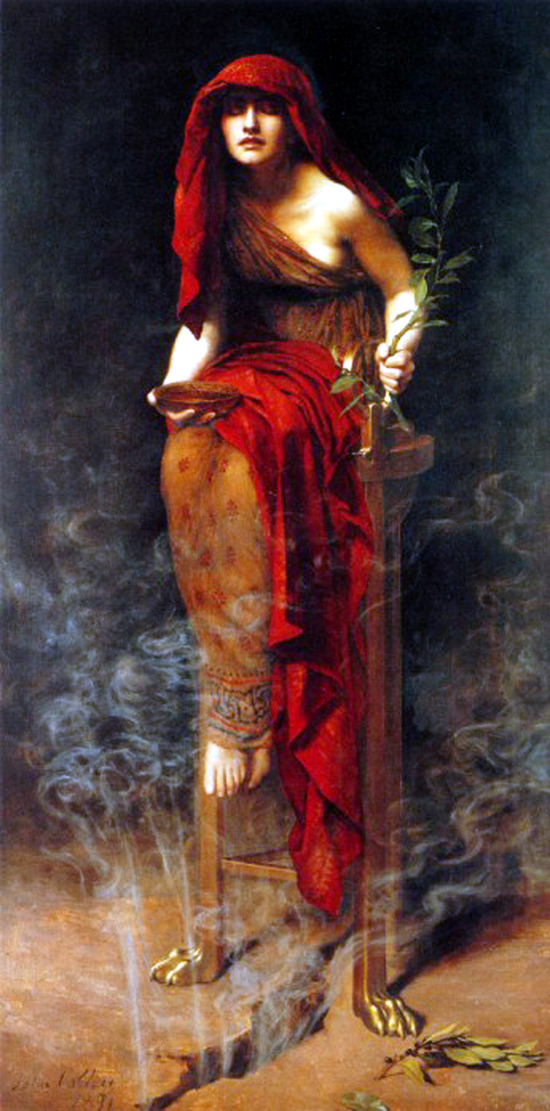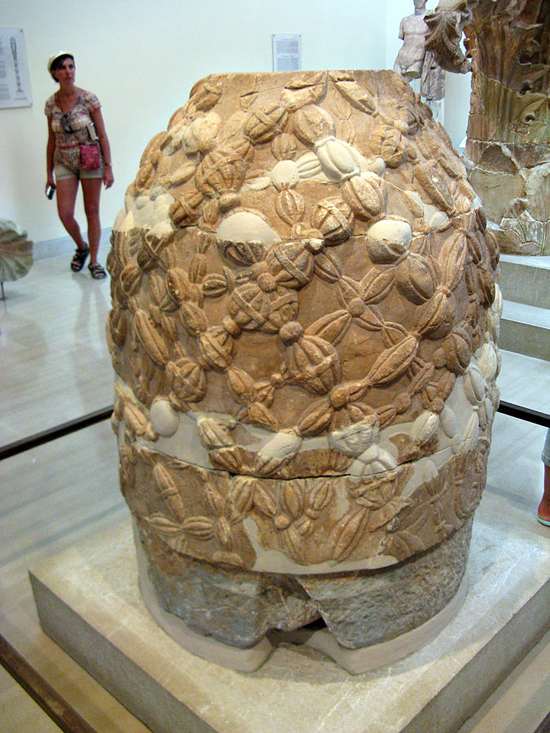The Oracle at Delphi
To get home more quickly, could Odysseus have received guidance from the Oracle at Delphi, rather than Tiresias? The Oracle does not put in much of an appearance in the Odyssey. This implies that Homer may have been largely unaware of it and that most divination there came in the centuries that followed, peaking in the 5th century BC.
That said, Delphi (Pytho) connects with the Odyssey because it is another of those stories where a Great Mother deity, in this case the earth goddess Gaia or Ge, is pushed aside by a male deity, in this case Apollo. It resembles Odysseus' erratic journey home, as he pushes aside the women he meets along the way, and seizes the story for himself.
Below is how John Collier saw the Priestess of Delphi in 1891. The Oracle ("pythia") was known to have sat on a tripod, inhaling fumes from the chasm below and channeling the words of Apollo. A male god. There are dozens of explanations for what the fumes were...

At least as far back as the classical Greek tragedians, the idea of the Oracle of Delphi was always worth an argument. There were those who complained that before Apollo there was no Oracle and that, anyway, Gaia was allowed to maintain a presence at Delphi, and that her priestesses spoke gibberish. Equally, there were those who saw Apollo as the invader and usurper, who killed the serpent or dragon ("python") of the goddess and then set himself up with his own priests to utter prophecies, while pretending they were from the female Oracles. The first group retorted that Apollo built his temple on the grave of Gaia.
Delphi itself, on the slopes of Mount Parnassus, was regarded as the navel (omphalos) of the world - the exact center of the universe - a myth also associated with Apollo. Yet the imagery is distinctively feminine. The omphalos refers to an egg-shaped stone (shown below) that sat at the innermost room of the ancient temple. Carved upon it was a knotted web, like the pattern of a weaver's loom, or perhaps a fisherman's net.

The Byzantines shut down the Oracle in 394 BC and the site was abandoned. It was later built over in Christian times - and Delphi was only rediscovered in 1893. After the medieval town was moved, excavations began right away. Nowadays the view to the sea is still breathtaking.

